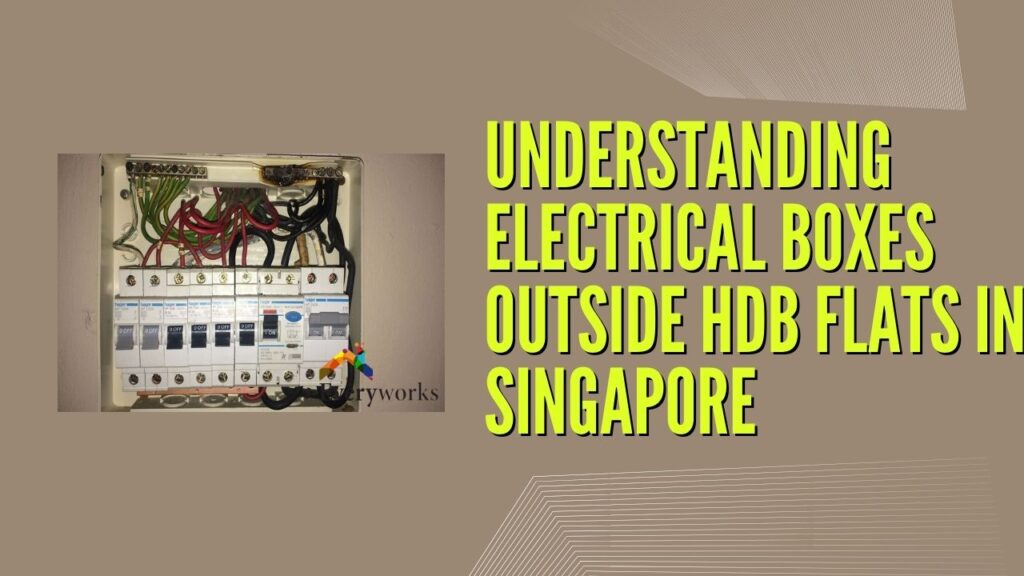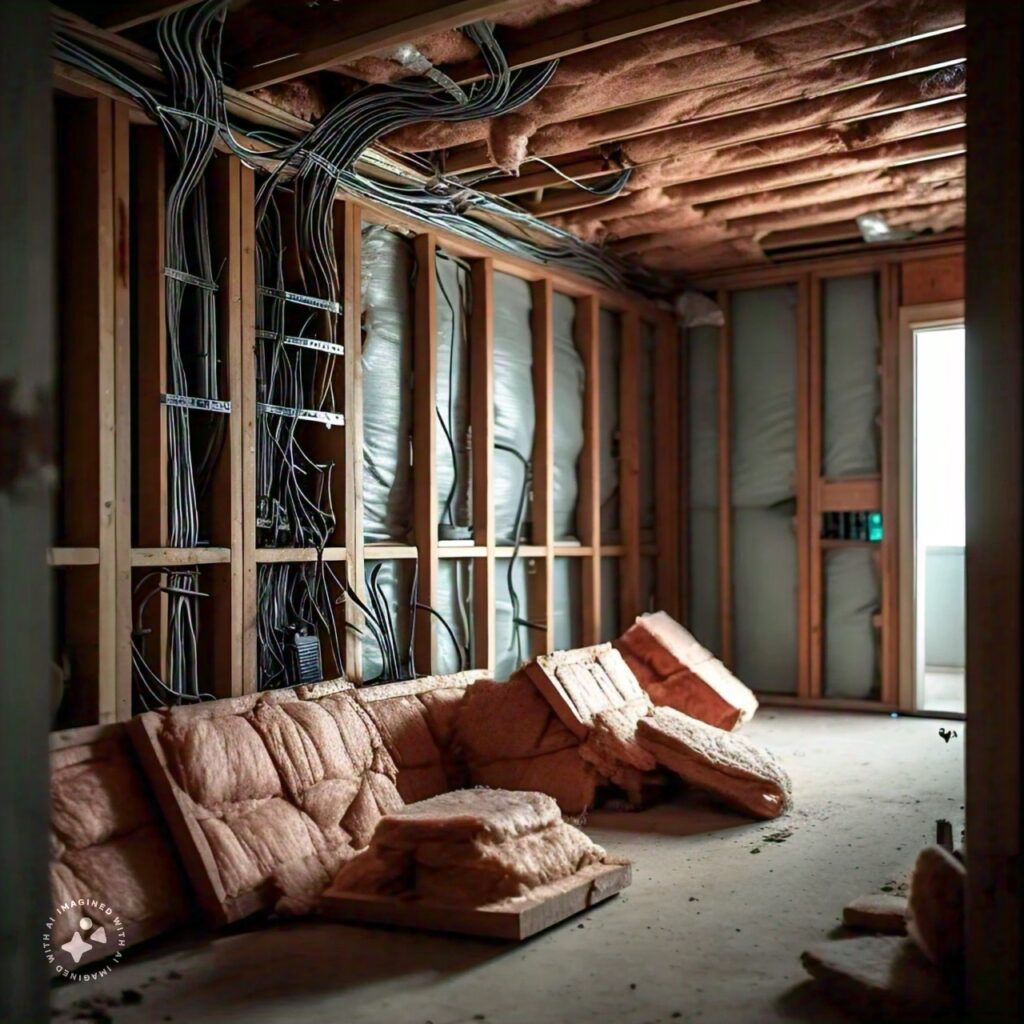Have you ever walked into a room only to be greeted by the annoyance of flickering lights? It’s a frustrating experience that can leave you wondering what’s causing it and whether it’s something to worry about.
Living here in Singapore, where we rely heavily on electricity for almost everything, flickering lights can be more than just an inconvenience—they can disrupt our daily routines and even raise safety concerns.
In this guide, we’ll talk about flickering lights, debunk some common myths that float around about why lights flicker and provide practical insights into what it all means for you and your home.
So, Whether you’re dealing with a stubborn bathroom light or noticing flickering across multiple rooms, this blog post will give you insights you need to know.
So, first start by,
Causes with Solutions Light Flickering When the Switch is off?
1. Electrical Interference

Causes: One of the primary reasons for flickering lights is electrical interference. It can occur due to various factors such as faulty wiring, loose connections, or even nearby electronic devices.
In Singapore, where the electrical infrastructure is robust but aging in some areas, these issues can crop up, especially in older buildings or homes.
Solution: Inspect the wiring in your home for any signs of wear or damage. Tighten loose connections and replace any faulty wiring. Keep electronic devices away from light fixtures to minimize interference.
2. Voltage Fluctuations
Cause: Another common cause of flickering lights is voltage fluctuations. Although, most of the time voltage supplied to homes is typically stable, occasional fluctuations can occur due to factors like heavy electrical loads or faults in the power grid. These fluctuations can cause a temporary imbalance in the electrical supply.
Solution: Consider installing a voltage stabilizer or surge protector to regulate voltage fluctuations. Contact your utility provider if you suspect issues with the power grid. Additionally, avoid overloading circuits to reduce the risk of voltage fluctuations.
3. Bulb or Fixture Problems

Causes: Sometimes, the problem lies with the bulbs or light fixtures themselves. Old or worn-out bulbs can flicker as they near the end of their lifespan. Similarly, poorly installed or damaged fixtures can also cause flickering.
Solution: Replace old or faulty bulbs with new ones, ensuring they are compatible with your fixtures. If the issue persists after bulb replacement, inspect the fixtures for signs of damage or corrosion. Replace damaged fixtures as needed, or consult a qualified electrician for further diagnosis and repair.
4. Overloaded Circuits
Cause: In households with multiple appliances and devices drawing power simultaneously, overloaded circuits can lead to flickering lights.This is particularly common in older homes with outdated electrical systems that may not be equipped to handle modern electrical loads.
Solution: Redistribute electrical loads across different circuits to alleviate strain. Unplug unnecessary devices or appliances, especially those with high power consumption, and avoid using multiple high-power devices simultaneously. Consider upgrading your electrical panel to accommodate higher loads if necessary.
5. External Factors

Cause: in rare cases, External factors such as lightning strikes, power surges, or even nearby construction work can also cause flickering lights. While these occurrences are relatively rare, they can still disrupt the electrical supply to homes, resulting in temporary flickering or dimming of lights.
Solution: Keep fixtures clean and dry by regularly dusting and wiping them with a dry cloth. Seal any gaps or openings that may allow moisture or pests to enter electrical components. Consider installing weatherproof or moisture-resistant fixtures in areas prone to humidity or moisture buildup.
Signs When it’s Dangererous Or When It is Safe
While flickering lights can be a nuisance, certain signs indicate when the situation may be potentially dangerous and when it’s safe to ignore or address the issue at a later time.
When Flickering Lights is Dangerours:
Frequent or Persistent Flickering: If your lights flicker regularly and persistently, it could indicate a more significant electrical problem that needs immediate attention. Ignoring frequent flickering can lead to electrical fires or damage to your home’s electrical system.
Burning Smell or Sparks: If you notice a burning smell or see sparks coming from your light fixtures, it’s a clear sign of an electrical issue that requires urgent action. These symptoms could indicate faulty wiring, overloaded circuits, or other serious problems that pose a fire risk.
Buzzing or Crackling Sounds: Unusual sounds like buzzing or crackling coming from your light fixtures are also cause for concern. These noises suggest electrical arcing or sparking, which can lead to electrical shocks or fires if left unattended.
When Flickering light is safe:
Occasional Flickering:
Occasional flickering, especially during times of high electrical demand or when large appliances are in use, is usually normal and not cause for immediate concern. However, if the flickering becomes more frequent or intense, it’s advisable to investigate further.
No Other Symptoms:
If your lights are flickering but you don’t notice any other signs of electrical problems such as burning smells, sparks, or unusual sounds, the issue may be minor and easily fixable. In such cases, it’s still a good idea to monitor the situation and consider consulting a professional if the problem persists.
Interpreting Flickering Lights in Different Scenarios
1. One Bulb Flickering:
- Possible Cause: If only one bulb is flickering, the issue is likely localized to that particular bulb or its fixture.
- Interpretation: It could indicate a loose connection, a faulty bulb, or a problem with the fixture itself. Replacing the bulb or tightening the connections may resolve the issue.
2. Bathroom Light Flickering:
- Possible Cause: Flickering lights in the bathroom could be due to moisture buildup or issues with the wiring.
- Interpretation: Moisture can corrode connections or affect electrical components, leading to flickering. Ensure fixtures are properly sealed and consider installing moisture-resistant bulbs or fixtures.
3. Multiple Lights Flickering:
- Possible Cause: Flickering in multiple lights throughout the house suggests a broader electrical issue.
- Interpretation: It may indicate problems with the main electrical panel, such as overloaded circuits or loose connections. Consulting a professional electrician is advisable to diagnose and address the issue.
4. Ceiling Lights Flickering:
- Possible Cause: Flickering ceiling lights could stem from various factors, including wiring problems or voltage fluctuations.
- Interpretation: If the flickering is intermittent, it may be due to temporary voltage fluctuations. However, persistent flickering could indicate more significant issues with the wiring or connections in the ceiling fixtures.
5 Myths About Flickering Lights Debunked
1. Myth: Flickering Lights Always Indicate a Serious Electrical Problem.
- Reality: While persistent flickering can signal underlying issues, occasional flickering is often harmless and may result from factors like bulb type or temporary voltage fluctuations.
2. Myth: LED Lights Never Flicker.
- Reality: LED lights can flicker, especially if they’re of poor quality or incompatible with dimmer switches. Additionally, external factors like power surges can cause LED flickering.
3. Myth: Flickering Lights Are Always Caused by Faulty Bulbs.
- Reality: While faulty bulbs can indeed cause flickering, other factors like loose connections, overloaded circuits, or wiring problems can also contribute to the issue.
4. Myth: Flickering Lights Can’t Cause Fires.
- Reality: Flickering lights can indicate underlying electrical problems that, if left unaddressed, may pose a fire hazard. Ignoring persistent flickering or other warning signs can increase the risk of electrical fires.
5. Myth: DIY Fixes Can Always Solve Flickering Light Issues.
- Reality: While some flickering light issues can be resolved with simple DIY solutions like tightening connections or replacing bulbs, more complex problems require professional intervention. Attempting DIY fixes without proper knowledge can exacerbate the issue or pose safety risks.

